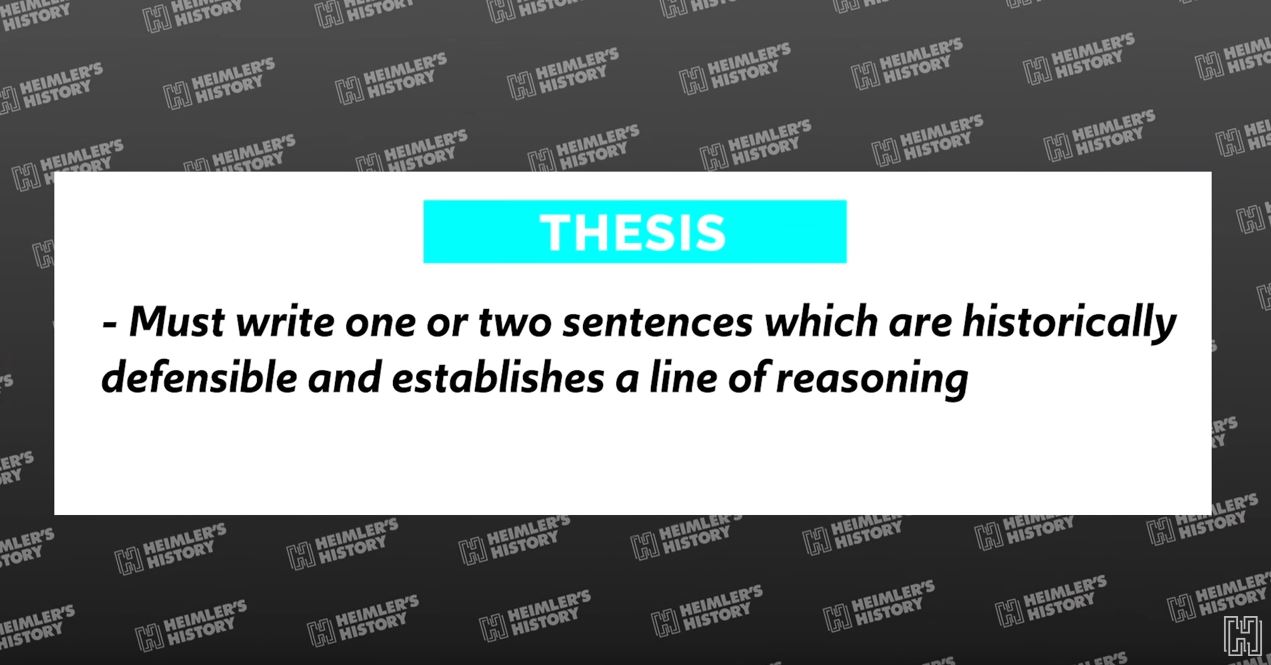Videos to Help with the AP Test

How to Write a Document Based Question (DBQ)

How to Write a Long Essay Question (LEQ)

The first part of Section I of the AP U.S. History Exam includes 55 multiple-choice questions typically appearing in sets of three to four questions, each with one or more stimuli, including primary texts, secondary texts, images (artwork, photos, posters, cartoons, etc.), charts or other quantitative data, and maps. Additionally, there will be at least one set of paired text-based stimuli (in either the multiple-choice questions or one of the short-answer questions). Multiple-choice questions require analysis
of the provided stimulus sources
The second part of Section I of the AP Exam also includes three required short-answer questions. Short-answer question 1 is required and includes a secondary source stimulus. The topic of the question includes historical developments or processes between the years 1754 and 1980.
Short-answer question 2 is required and includes a primary source stimulus. The topic of the question includes historical developments or processes between the years 1754
and 1980.
Students may select short-answer question 3 or 4, neither of which includes a stimulus. Short-answer question 3 focuses on historical developments or processes between the years 1491 and 1877. Short-answer question 4 focuses on historical developments or processes between the years 1865 and 2001.
The document-based question presents students with seven documents offering various perspectives on a historical development or process. The question requires students to do the following:
--Respond to the prompt with a historically defensible thesis or claim that establishes a line of reasoning.
--Describe a broader historical context relevant to the prompt.
--Use the provided documents to support an argument in response to the prompt.
--Use historical evidence beyond the documents relevant to an argument about the prompt.
--For at least three documents, explain how or why the document’s point of view, purpose, historical situation, and/or audience is relevant to an argument.
--Demonstrate a complex understanding of the historical development that is the focus of the prompt, using evidence to corroborate, qualify, or modify an argument that addresses the question.
The topic of the document-based question will include historical developments or processes between the years 1754 and 1980.
The long essay question requires students to do the following:
--Respond to the prompt with a historically defensible thesis or claim that establishes a line of reasoning.
--Describe a broader historical context relevant to the prompt.
--Support an argument in response to the prompt using specific and relevant examples of evidence.
--Demonstrate a complex understanding of the historical development that is the focus of the prompt, using evidence to corroborate, qualify, or modify an argument that addresses the question.
Students must select one of three long essay questions. Each question focuses on the same reasoning process, but historical developments and processes in different time periods. The first option focuses on historical developments or processes between 1491 and 1800, the second on historical developments or processes between 1800 and 1898, and the third on historical developments between 1890 and 2001.



Built with Mobirise
Web Site Maker